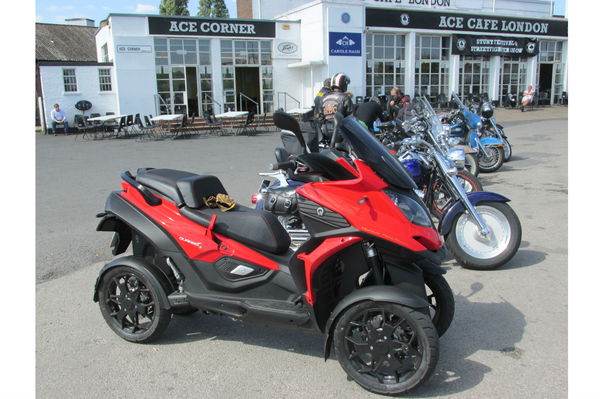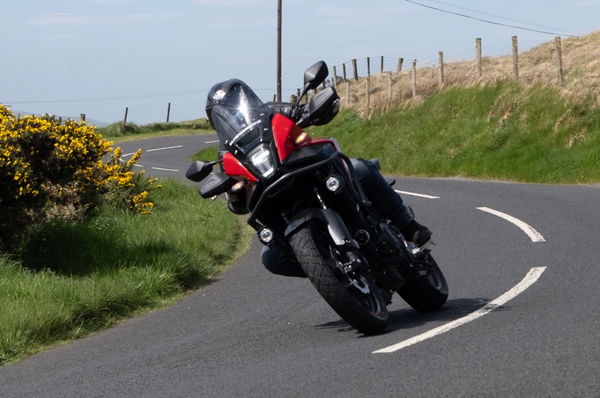First ride: Quadro4 review
The first leaning step-thru quad. Or shall we just agree to call it a four-wheeled scooter?


‘IT’S a quad,’ one or two people commented in response to our recent news story on what the makers call the first four-wheeled scooter.
I suppose it is a sort of quad. It’s called the Quadro4, so there’s a clue in the name.
But in that case it’s a leaning step-thru quad. That conjures a confusing mental image so we’re sticking with the manufacturer’s description.
I’ve just ridden the first four-wheeled scooter (or leaning step-thru quad if you insist).
Its closest relative is probably the three-wheeled scooter with one wheel at the back, like Piaggio’s MP3 or Yamaha’s Tricity. Like those, the Quadro4 has a tilting suspension system allowing the wheels to lean in line with the chassis while maintaining contact with the road. The difference is the Quadro4 has it at both ends.
And with the loss of a single central rear wheel some facet of the physics keeping it upright seem also to have altered.
I won’t pretend I understand why bicycles and motorcycles don’t fall over. A century of research has barely arrived at a consensus. I do know that the forces at work on the Quadro4 feel slightly different. Where three-wheeled scooters more or less mimic the sensation of riding a two-wheeler, the Quadro4 feels more foreign.
Like the three-wheelers, and any motorcycle or bicycle, you tip it over by counter-steering. But on the Quadro4 the connection between the handlebars and lean angle feels less direct.
The tilting suspension system offers hydraulic resistance to leaning it over. That can make the Quadro4 feel like it may run wide in corners, at least until you’ve got used to it. It will go over but more input than usual is required through the bars to make it. Up to 45° of lean is achievable according to Swiss manufacturer Quadro. With four contact patches, one thing that’s never in doubt is grip.
I had a relatively short test ride on the four-wheeler. The new UK importer brought one to our office in Hammersmith and waited for two hours while I rode it up and down the M4 and then around the North Circular to the Ace Café, where someone asked if it was car. It felt more manoeuvrable by the time I handed it back, with the benefit of some time to adjust to it.
Luckily, two-wheelers usually naturally want to go in a straight line. At low speed I found the Quadro4 a little less inclined to do so of its own accord, especially moving off from a standstill. I’d open the twist-and-go throttle and involuntarily turn left or right a little as it began rolling, which is worrying when filtering through traffic. A big handful of throttle kept it straight but it’s something else that took some getting used to.
You might as well use a big handful of throttle because the Quadro4 is not very fast. It makes 30hp from its 346cc single-cylinder engine according to Quadro, and weighs 257kg dry. A Porsche easily beat me away from some traffic lights, after I’d filtered to pull up alongside it. I hope it was some consolation to the driver for the thousands of times he’s been left behind by motorcycles.
Unusually, both the speedometer and rev counter have red lines, at 130kph (80mph) and 8,000rpm, and both are reached simultaneously. At an indicated 120kph (74mph) the rev counter needle hovers at about 7,000rpm. The black screen provides enough wind protection for those speeds.
It’s comfortable, although I found the brake pedal clashed with my right foot, so my toes were sticking out of over the edge of the footboard.
The ride quality is smooth. A benefit of four wheels is that when one goes into a pothole there are another three that don’t, so the disturbance is less. The tilting system also enables the main chassis to remain vertical on an uneven surface.











